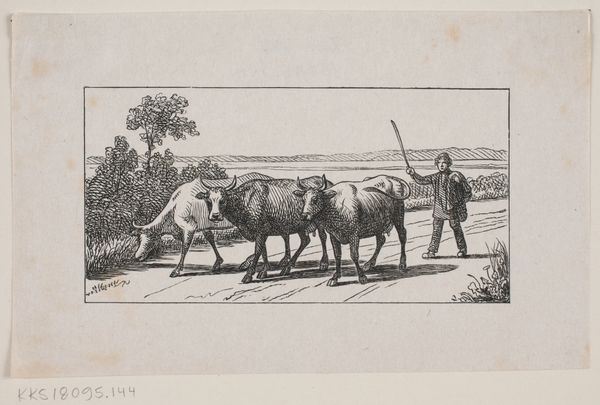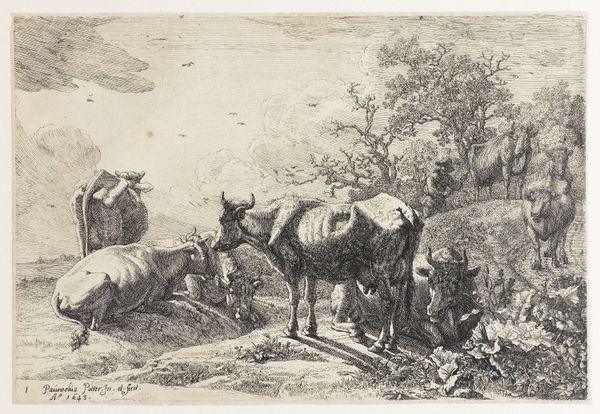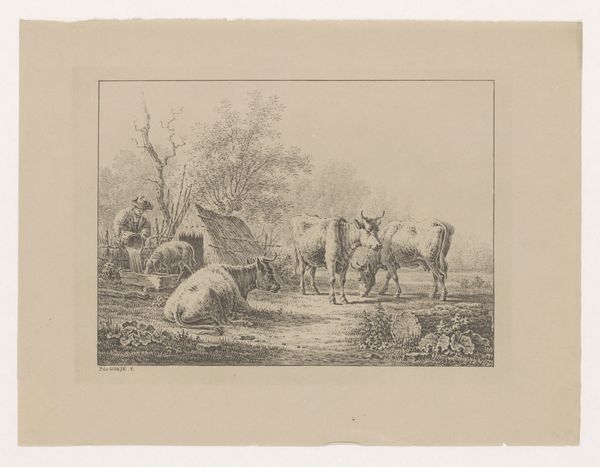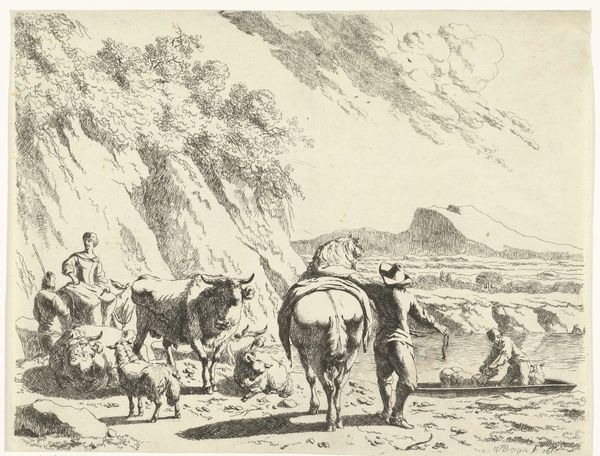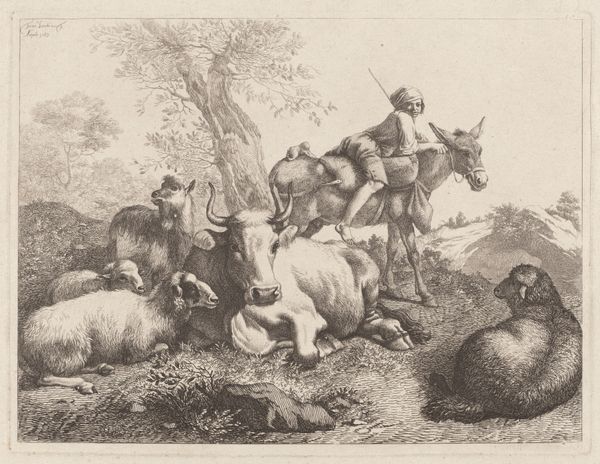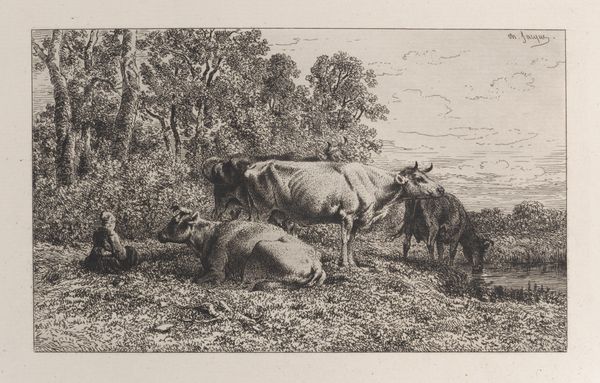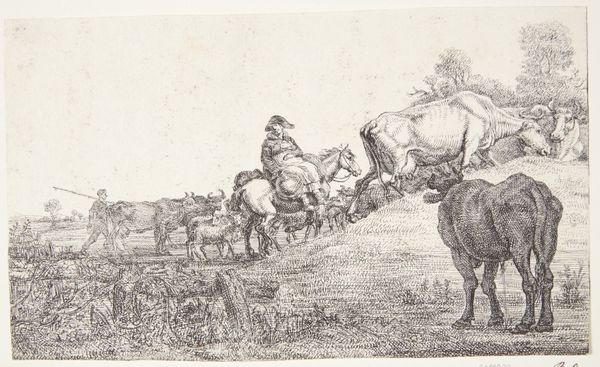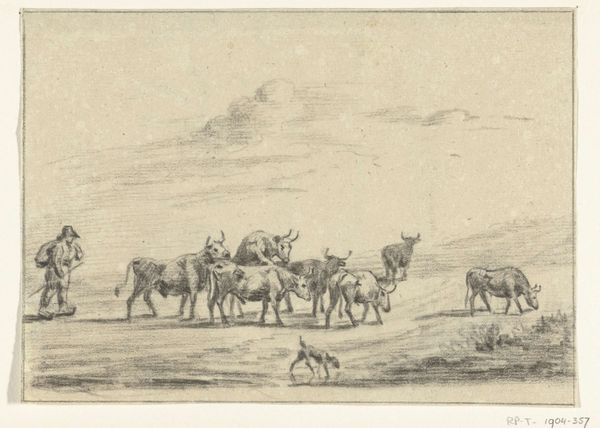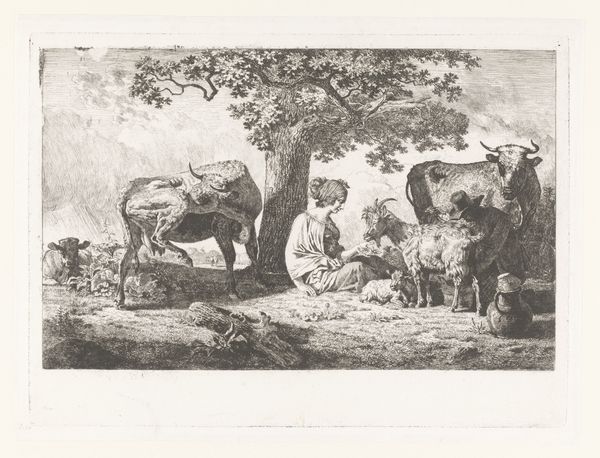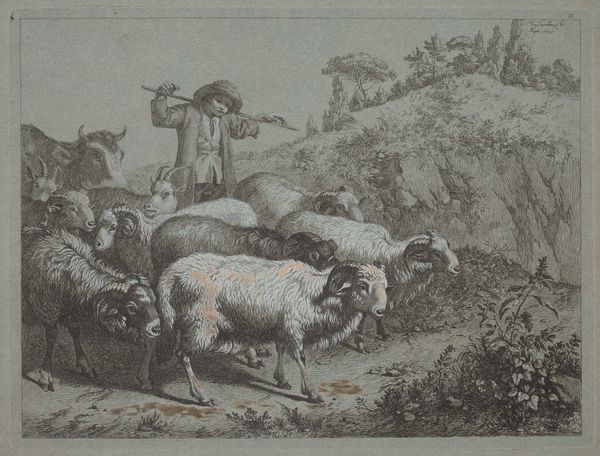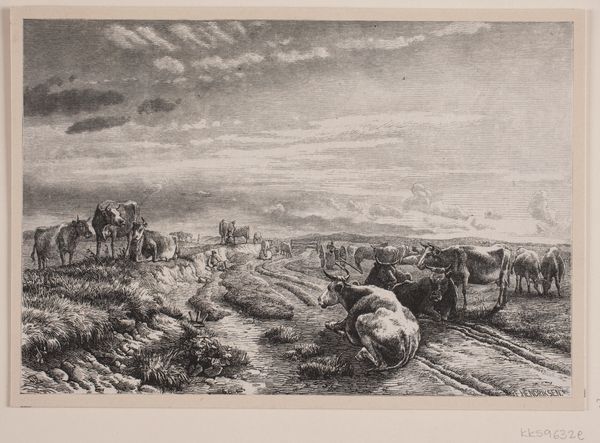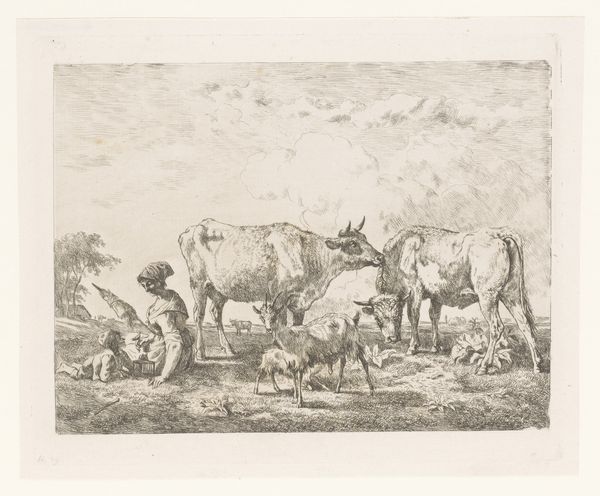
drawing, print, etching
#
drawing
# print
#
etching
#
landscape
#
figuration
#
form
#
pencil drawing
#
line
#
genre-painting
#
realism
Dimensions: Plate: 5 11/16 × 8 1/8 in. (14.5 × 20.6 cm) Image: 3 9/16 × 7 1/16 in. (9.1 × 18 cm)
Copyright: Public Domain
Curator: What strikes me immediately is the stillness, even though the subject matter is all about labor. The muted tones add to that feeling. Editor: That’s interesting. This is "Attelage de Boeufs," an 1868 etching by Charles Jacque. He was a key figure in the Realist movement, so scenes of rural life were pretty typical for him. He trained as an engraver early on, which informed much of his career. I find it fascinating how the technology of printmaking allows for democratic distribution—literally impressions—of this image of labor, even now. Curator: Exactly, it’s a great example of how printmaking democratized art, even while representing fairly unromantic depictions of manual work. I think the emphasis on line work is a beautiful representation of realist principles and reveals his fascination with material processes. Notice the etched lines creating texture in the field. Editor: I agree. And the etching is particularly insightful considering rural labor's ties to class and identity at this moment in history. In 1868, industrialization was rapidly changing those social structures, so Jacques is engaging with a moment of intense transition. Curator: I hadn't considered how it connects with the shifts happening in agricultural labor practices at that time. The texture from the etching and even the subject matter evokes a sense of rawness. It reminds me of Courbet, yet it feels less burdened. The labor looks less idealized or gritty but practical, even calm. Editor: I see what you mean, and I think it reflects how the romanticized images of rural life can obscure the reality of rural poverty and exploitation. It seems this artwork allows a space to understand the cultural weight this sort of subject had during the 19th century. The scale makes the physical burden of farming very clear, highlighting the physical impact on human bodies and even on the livestock used. Curator: Thanks for putting that context around this piece! For me, what's powerful is witnessing labor as art and process becoming tangible through each precise line. Editor: And, for me, reflecting on who is able to produce, own, and interpret that process matters now more than ever.
Comments
No comments
Be the first to comment and join the conversation on the ultimate creative platform.
